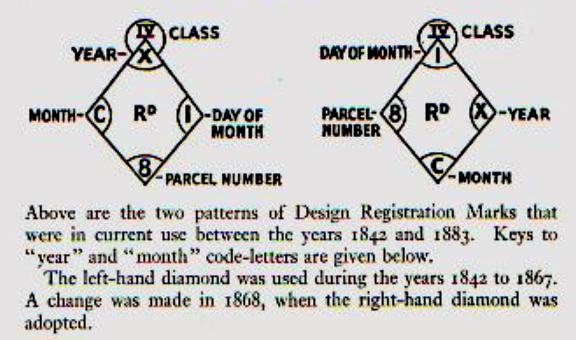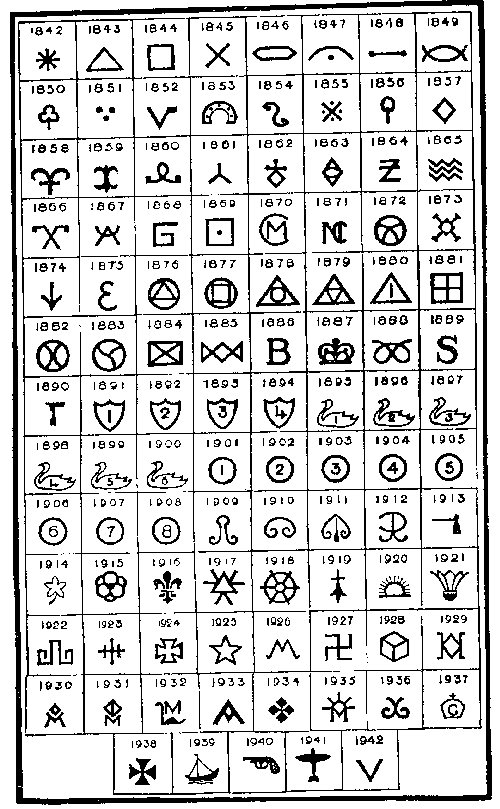CERAMIC'S
General rules for dating.
Any printed mark with the Royal
Arms (or variations of the Arms) are 19th. century or later.
Any printed mark with the name of
the pattern can be regarded as being later than 1810.
Use of the word Royal in Manufacturer's
mark suggests a date after the middle of the 19th century, (such as Royal
Cauldon, Royal Worcester).
The word's "Bone China" "English
Bone China", etc. donate a 20th century date.
The word "England" commenced to be used c1890 , to comply with the American McKinley Tariff Act.
"Made in England" indicates 20th century
The use of the word "Limited" or "Ltd" after a makers name indicates a date after 1860.
The words "Trade Mark" after 1887
"Rd. No." followed by a number indicates 1884 or later,
if number above 360,000 the date is subsequent to 1900.


The above is very very useful for dating items.
Below is a chart for identifying the date marks on Minton pottery.
from 1842 to 1942.

I hope this will be of help. The date mark is usually impressed and
sometimes it is hard to see, as it often gets filled up with the glaze.
There is so much to learn about ceramics, learning to recognize
the different pastes is difficult, hard paste porcelain is cold to
the touch, and the overglaze decoration stands out proud, where as soft
paste, is slightly warmer to the touch, and
the decoration sinks into the glaze, the translucency's of the different
factories is tricky to learn.
The mark on ceramics is the last thing to check,
as there is so much faking going on that the marks cant be trusted.
![]()
Now for a couple of tips on collecting furniture.
Examine each piece to see if there are any tool marks, especially in unseen places such as the inside of the rails of chair seats.
Learn to tell the different marks that the antique tool makes from modern tool marks. Beware of smoothed unseen areas the workmen did not waste time on unseen parts.
On French polished furniture, see if there are white flecks in
the grain, as on old furniture, made before c1820 the grain of the
wood was filled with ground up brick dust whereas on later furniture,
stained plaster of paris was used, and over the years the stain has
faded and the white plaster shows up as white flecks.
Another clue look for hand made nails & screws, with screws the
driver slot is always of centre with nails they rust a little with age,
and the wood round them is always discoloured, hinges quite often show
file marks.
A few tip's on veneer,
If veneer is under a sixteenth of an inch in thickness it is modern
(late 19th. or 20th. century)
on my sideboard the veneer on the top is 3/16th.of an Inch thick
which is the thickest I have come across,
because you must remember all veneer had to be sawn by hand tools.
By the second half of the 19th. century they were using machinery so could
get extremely thin veneer from then on.
GOOD
LUCK
WITH
YOUR
COLLECTING